
Alan Wade
Will there be a magic formulation, a practice or treatment, that will return us to pre Varroa` days. In reviewing weaknesses and strengths of the existing Varroa control measures, Rosenkranz, Aumeier and Ziegelmann state thati:
There is neither a Varroa treatment available which fulfils all the criteria ‘safe, effective and easy to apply’ nor a honey bee which is sustainably tolerant to Varroosis under temperate climatic conditions.
They also signal that:
In most countries the Varroa situation is stable; the beekeepers have learned to ‘live with the mite’ and most of them do not know beekeeping without Varroosis.
To add to the armoury of existing treatment options, brood breaks, mite trapping and treatment with synthetic chemicals, we can add a growing list of miticidal natural products (essential oils) and a more limited list of fungal mite pathogens. Could one or several components of these natural oils or could a mite predator be an effective mite sledgehammer?
Given that mites are becoming progressively resistant to commercial arachnicides: organophosphates, pyrethroids and amidines, there is an added urgency in find new agents that are truly effective and, ideally, readily available. Let us explore the emerging alternatives; biological control agents, mite predators and pathogens of Varroa (of which naturally there are vanishingly few), and the one hundred and fifty of so natural oils that have shown high efficacy in mite kill under laboratory conditions but whose individual constituents have, in the main not been evaluated in field trials. Amongst these, garden herbs mint family, lemon grass, spice, tea tree, eucalypt, citrus and geranium oils have all shown show great promise.
Beyond widely employed natural plant products, thymol, the lupulones (beer hop acids) and the organic acids we can identify additional major natural products as potential miticides. They include carvacrol (oregano and sage oils), citronellal (lemon grass and citrus oils), eugenol (clove oil), cinnamaldehyde (cinnamon bark oil), geranial and neral (α and β-citral) (geranium and citrus oils), linalool, 1,8-cineol (eucalyptol), p-cymene, sabinene, β caryophyllene, α and β-phellandrene, ocimene, myrcene and γ-terpinene (largely myrtaceous oils) and α and β pinene (pine and eucalypt oils). By and large these well characterised natural products have not been evaluated for their in-hive miticidal efficacy. A few like carvacrol (a simple isomer of thymol) and a major constituent of the garden herb oils oregano and savory would appear a priori likely likely candidates. A vast range of lesser available natural products, mainly simple terpenes, may be important adjuvants or themselves be the more active as miticides. Altogether few of this cocktail of metabolites have been assessed for their effectiveness of Varroa control agents in field hive trials.
Barriers to the widespread use of natural oils for varroa control lies in their very variable makeup, the lack of knowledge of an effective dose (over-dosing will kill mites and bees, under-dosing will be ineffectual and encourage mite resistance), poor application protocols and spurious claims as to their true efficacy. At the limit the widely advertised alternative treatment product ‘Stop Varroa’ has no USDA or European registration, provides no hint as to its constituents. I’m inclined to label it a 100% snake oil kit.
Natural plant products
In a defining laboratory study of thirty natural oils (Table 1) Hýbl and coworkersii evaluated their in vivo mite kill efficacy, identifying the key constituents (> 5%) of each oil. An examination of the array of their chemical structures (Figure 1) show that they are predominantly monoterpenes (ten-carbon units), sesquiterpenes (fifteen carbon units) or simple – mostly terpene based – aromatics.
To screen for their miticidal effectiveness these researchers conducted laboratory ‘petri dish’tests on both mites and nurse bees running controls to allow for natural mite and bee attrition. The selection ratio (SR), the simple ratio of mite to bee kill, assigns a value to the given treatment for given dose and exposure time. The most suitable candidate plant extracts hence have a high SR value signalling a high mite kill and low bee mortality.
| Source | Constituent (% content) | Source | Constituent (% content) |
| Carrot seed oil (Daucus carota) | caratol (30) | Pelargonium leaf and flower oil (Pelargonium graveolens) | citronellol (dihydrogeraniol) (34) |
| α-pinene (15) | geraniol (15) | ||
| sabinene (10) | citronellyl formate (8) | ||
| β-caryophyllene (8) | i-menthone (6) | ||
| β-bisabolene (6) | 10-epi-γ-eudesmol (5) | ||
| Cinnamon bark oil (Cinnamomum zeylanicum) | (E)-cinnamaldehyde (78) | Peppermint herb oil (Mentha peperita) | (+)-limonene (38) |
| eugenol (8) | menthol (16) | ||
| Clove oil (Eugenia caryophyllata) | eugenol (87) | α-pinene (16) | |
| β-caryophyllene (10) | β-pinene (11) | ||
| Litsea fruit oil (Litsea cubeba) | α-citral (geranial) (39) | i-menthone (6) | |
| β-citral (neral) (29) | Savory herb oil (Satuteja montana) | carvacrol (cymophenol) (42) | |
| (+)-limonene (14) | γ-terpinene (36) | ||
| Manuka leaf oil (Leptospermum scoparium) | (+)-calamenene (18) | p-cymene (12) | |
| leptospermone (16) | Thyme herb oil (Thymus vulgaris) | thymol (41) | |
| flavesone (6) | p-cymene (17) | ||
| α-selinene (5) | Wild Thyme herb oil (Thymus serpyllum) | thymol (16) | |
| Oregano herb oil (Origanum vulgare) | carvacrol (cymophenol) (74) | carvacrol (cymophenol) (12) | |
| p-cymene (7) | p-cymene (15) | ||
| γ-terpinene (6) | geraniol (11) | ||
| γ-terpinene (10) |
Table 1 Emerging natural plant oil miticides with key constituents (≥ 5% of total mix.) based on the pioneering study of Hýbl and coworkers.
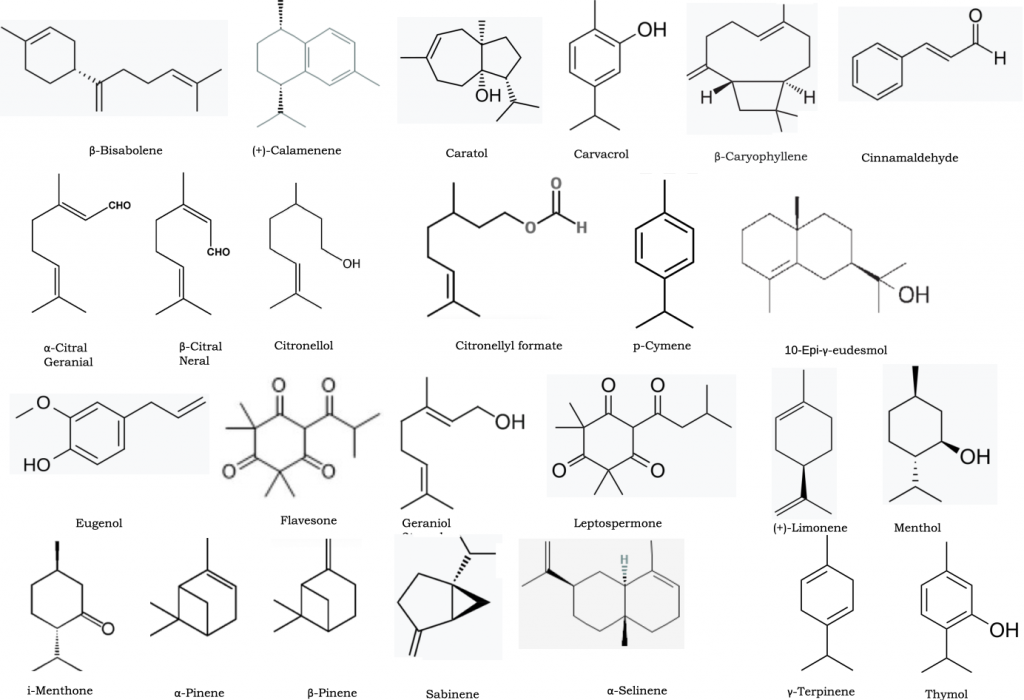
Figure 1 A menagerie of natural chemical constituents cited by Hýbl and coworkers, including monoterpenes and sesquiterpenes, cyclic β-triketones and simple aromatics.
Note only some have miticidal properties.
In reviewing the merits of this screening process Anton Imdorf and Stefan Bogdanoviii state that:
More than 150 essential oils and components of essential oils have been evaluated in laboratory screening tests. Very few of them, however, have proven successful when tested in field trials…
Based on the available studies, relying solely on a single treatment with an essential oil or essential oil component is generally not sufficient to maintain mite populations below the economic injury level. Therefore, efforts are necessary to optimise the use of these substances and to incorporate them, along with other measures for limiting mite populations, into an integrated pest management strategy for control of Varroa jacobsoni [now V. destructor].
The good oils
So what other oils and waxy solids have been tested for their miticidal efficacy, and which components of these natural products have been rigorously evaluated for their miticidal efficacy under field conditions? This is hard to say given global reporting of successful treatments with variable testing rigour. The bar is set high: only the organic acids (some formulations of formic, oxalic and lactic acid), thymol, the β-hop acids and occasional mixed formulations have so far gained regulatory approval though dispensation to employ alternative treatments has sometimes been given to employ off market formulations. This said there is steadily growing list of published reports of new and novel treatments.
As importantly methods of application of known as well as promising miticides to ensure more effective mite targeting is also being actively investigated. In this Sabahi and coworkersiv from the University of Guelph signal that:
…natural products require evaluation under hive conditions and that more focus is needed on means of effecting their continuous release over more than a single brood cycle in the presence of brood.
They compared the impact of oxalic acid in a sucrose solution impregnated into cardboard, a mixture of oregano and clove oils in an ethanol-gelatin solution impregnated into absorbent pads and oregano oil delivered using electric vaporisers to test the hypothesis that continuous release of miticides increases the varroacidal efficacy of essential oils. The Varroa mite kill rates for these treatments were 77 ± 7%, 58 ± 13% and 97 ± 0.7%, respectively, there being no differences for bee mortality between control and treatments.
From this we surmise that fumigation of brood nests, vaporising of less volatile materials, and formulation of slow release versions of products that only achieve quick knockdown action are essential to ensure that mites are effectively targeted.
Natural function of plant metabolites
Plants have evolved to produce a wide range of natural products, defensive allelopathy agents that prevent germination of competing plants, chemicals that control pathogenic microorganisms (such as fungi), and toxins that limit invertebrate (e.g. insect, helminth and nematode) attack and that also limit herbivory (the main reason there is not a possum in every gum tree). As natural ‘pesticides’ it is difficult to predict which natural product or combination of products will target which class of organism. In the honey bee context, some will target phoretic honey bee mites and have, at best, very limited impact on bees and their brood.
Thus introduced, we can scope the growing list of plant metabolites that may be lethal to mites. They include inter alia terpenes, glycosides, chalcones, phloroglucinols, polyphenols, triketones (Figure 2), sideroxolons, tannins and simple aromatics. Typical of the latter are eugenol (clove oil), cinnamaldehyde (cinnamon bark), wintergreen oil (methyl salicylate) and coumarin (new mown hay). Eucalypts by way of example produce a well known range of terpenes (typically dominated by the monoterpene 1,8-cineol (eucalyptol) and phloroglucinols that limit insect and marsupial herbivory, while tea tree and some eucalypt species have an armoury of cyclic β-cyclic triketones that have been marketed as more general purpose pesticides.
In practice, oils can be ranked on their honey bee miticidal efficacy. Laboratory studies to screen specific oils or their principal components are predicated on the so called selection ratio (SR). This index ranks oils in terms of their in vivo mite to bee kill ratio, is conducted in petri dishes: bees in one dish, mites in another exposed to measured amount of oil for a given time – usually hours to a few days – that makes allowance for natural die off of mites and bees. All in all a quick indicative bio-assay.

Figure 2 Natural β-cyclic triketones found in the myrtaceae familyv.
Note leptospermone, flavesone and grandiflorone are components of tea-tree oil used for mite treatment. The triketones are found across the Myrtaceae family but their stand alone efficacy against Varroa mites has not been tested.
Imdorf and coworkers also note that:
…there are also some disadvantages of these natural compounds. Lactic acid and oxalic acid have to be applied under broodless conditions and, therefore, are not suitable in regions without a brood stop during winter.
Imdorf also notes that the in-hive volatility of many natural products under variable ambient temperature and climatic conditions will be important factors in determining their practical efficacy and will dictate how the products, unlike the synthetic (contact) miticides, are applied concluding that:
…the range between efficacy on the parasite and toxicity for the host, is not very large. This has to be taken into account for the development of treatment concepts which include these compounds.
So what are these natural oils, what are their active constituents and how they been tested to ascertain their suitability for use under hive conditions? Microcapsules, adjuvant or solvent assisted impregnated cloth or cellulose based strips, topical spraying and vapourisation have all been employed to ensure that mites make contact with the miticide and to ensure that treatment can be extended from a period of a few days to some weeks.
The selectivity ratio (SR)
Many factors impact on the suitability of a particular natural product, the extracted natural oil or any of its constituents. Most importantly adverse impacts on brood and the potential of the product to target mites under hive conditions need to be taken into account. For example the volatility of the agent or application method and its capacity to target mites present under brood cappings will determine its effectiveness. Nevertheless we may scope the range of oils that have been screened using the SR test, add to the list of specific constituents of these oils that may have miticidal efficacy and identify which products have been shown to be effective under hive conditions. We might also take cognisance of the fact that Tropilaelaps, mites whose largely existence is under sealed brood cappings, may be more difficult to target except where the miticide is persistent for a period extended beyond a complete brood cycle. One problem with the test is that, poorly applied, it sometimes ignores natural mortality of both bees and mites, that testing times (several days) and application rates vary between reported trials and that the number of bees and mites undergoing treatment have not been standardised. Despite these shortcomings, and the fact that natural oils from a single species of plant vary in their composition, candidate natural miticides can be ranked roughly for their potential to kill mites rather than bees.
Some natural products, notably the organic acids are well known for their impact on early life stages (eggs and unsealed brood) and have a short (days) hive life but, with adjuvants such as glycerine, their effectiveness is extended well beyond a full brood cycle and their impact of bee brood is ameliorated.
To search for individual natural products that specifically target mites, such as Varroa and Tropilaelaps, and not honey bees, we might review the suite of natural oils that have shown promise in the laboratory and that have been focused on field testing. Grouping different oils by plant family, those with high SR values and with similar major constituent chemical profiles, may help narrow this search.
Essential oils with high oil content and good evidence of miticidal activity come mainly from the mint/garden herb (Laminaceae), the eucalypt, tea tree, turpentine, clove (Myrtaceae), the citrus (Rutaceae), wormwood (Asteraceae), pine tree (Pinaceae), cinnamon (Lauraeae), aromatic lemon grass (Poaceae), the neem tree [Meliaceae] and the geranium (Geraniaceae) families. However not everyone wants camphorated, mothball or garlic flavoured honey so their capacity to leave residues – a fault of thymol – needs also to be taken into account.
Chemicals of likely miticidal efficacy such as eugenol and its derivatives are spread widely across the plant kingdom. Oil profiles of plants also vary by species, where they are grown and the conditions and season of harvest and method of extraction. While the capacity of an oil to be effective in vivo (in the laboratory), its method of application and effective dose and its potential to be approved as an acceptable treatment product is a distant goal.
Let’s dive into the melting pot to see what may substitute for the existing limited range of natural treatment products. Some, such as oregano, cinnamon bark and clove oils have been tested for in-hive efficacy but have not gained regulatory approval. Adamczyk and coworkersvi (sourcing Imdorf collaborators) observe that:
New methods of control based on the use of essential oils from different plants have also been tested successfully against the mite. For example, uses of wintergreen oil as a thermal treatment, an aerosol treatment with a thyme-sage oil mixture, and a contact treatment with neem oil and the passive evaporation of oregano oil and marjoram oil have been described. However, for various reasons none of these treatments have been adopted in beekeeping. The main obstacles are the difficulties in obtaining standardized essential oils or the variations in local environmental and colony conditions.
Plant family exemplars
The lemon grass family oils
Venancio and coworkersvii describes two biosynthetic pathways for the major constituent of lemon grasses (Cymbopogon), citronellal. Lemon grass oil is largely made up of simple terpenes (Figure 3), the essential oil having an impressive record of mite suppression.
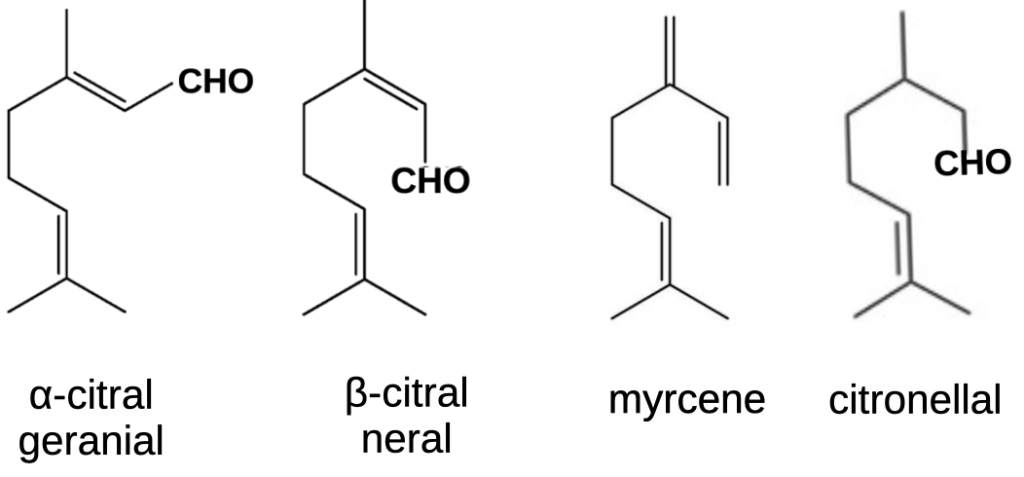
Figure 3 Principal monoterpene constituents of lemon grass oils.
The citrus family oils
Oils from citrus familyviii (Rutaceae) are principally comprised of limonene, β-myrcene, α-pinene, p-cymene, β-pinene and γ-terpinene but also a number of other minor constituents (Figure 4; see also Figure1). Valencene smells of oranges.
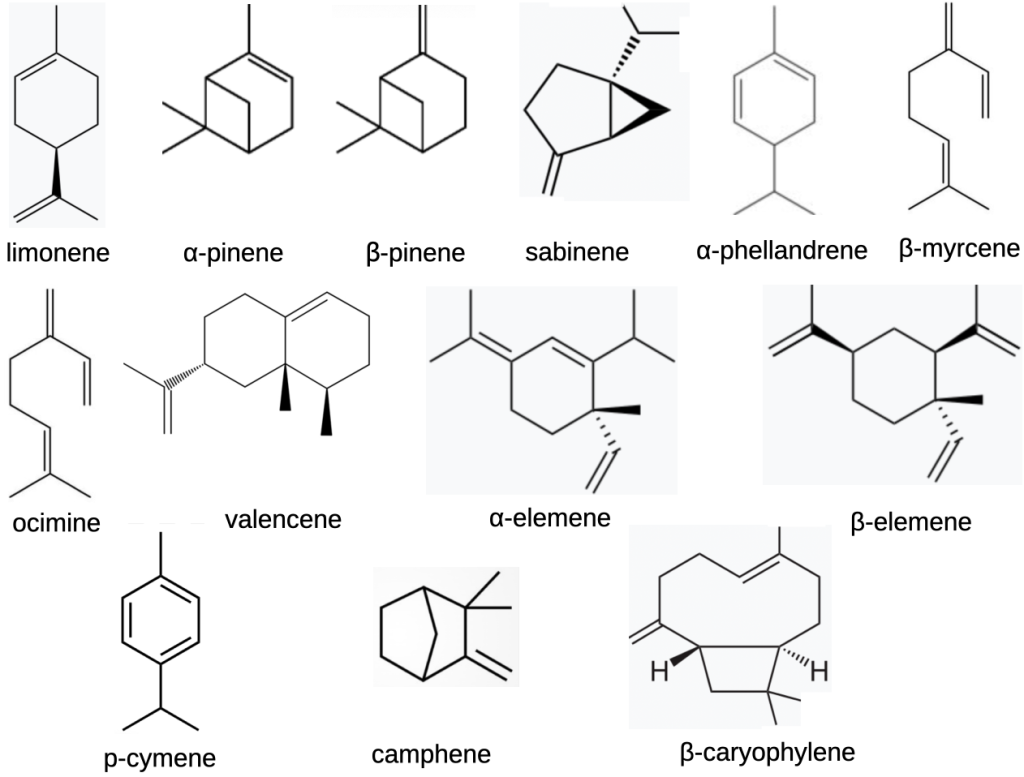
Figure 4 Common constituents of citrus oils.
The oxalis family oils
The oxalis family (Oxalidaceae) famous as a weed of many types (sorrel, wood sorrel, soursob), and many garden comestibles (spinach, carrots, New Zealand spinach and rhubarb are all famous for their oxalic acid content. The other acids in common use lactic acid, produced from sour milk and found in animal tissue, and formic acid familiar in the bull ant sting, as miticides are not the only simple water organic acids that might complement the standard three acids. Acetic acidix, citric acidx and tartaric acidxi are effective miticides at least in standard laboratory trials. While apparently less effective than approved acid formulations, they may assume a role if for example mites become tolerant to the widely employed oxalic acid (Figure 5).

Figure 5 The simple organic acids.
More significant developments, however, have come from new methods of application of oxalic acid notably admixture with sugar syrup or glycerine outlined in Smite the mite Part II.
The eucalypt, tea tree and paper bark family
Oils from the Myrtaceae family, principally the eucalypts containing 1,8-cineol (eucalyptol) their constituent) contain a vast array of terpenes. Eucalypt oils, cineol apart, are often dominated by limonene, the pinenes and p-cymene but the range and variety of constituents is too vast to single out potential miticides other than of course cineol, though some plants in the family (e.g. Corymbia citriodora, Leptospermum petersonii are characterised by having a large component of lemon scented geranium oils: citronellal, neral, geranial, while commercial tea tree oils contain high amounts of γ-terpinene (as well as cineol) and the most common eucalypt monoterpenes.
Overall the family is hard to characterise as having any particular chemical profile, many species sporting other bioactive chemical groups such as the β-cyclic triketones (Figure 2) and the phloroglucinols (Figure 6) that, because of their indigestibility, ensure that every many eucalypts in the symphtomytus subgenus are not subject to insect defoliation.
Barbosa and coworkersxii propose a list of fifteen prominent terpene constituents of eucalypt oils (Figure 7) but their contributions vary widely and there are also myriad other biologically active non-terpene constituents. The turpentine tree (Syncarpia glomulifera) oil has a particularly high level of 3-carene (Figure 8) as well a fairly standard terpene profile along with many resinous phenolics.
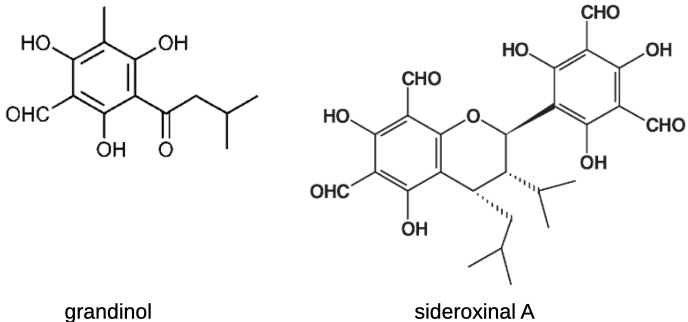
Figure 6 Representative phloroglucinols.
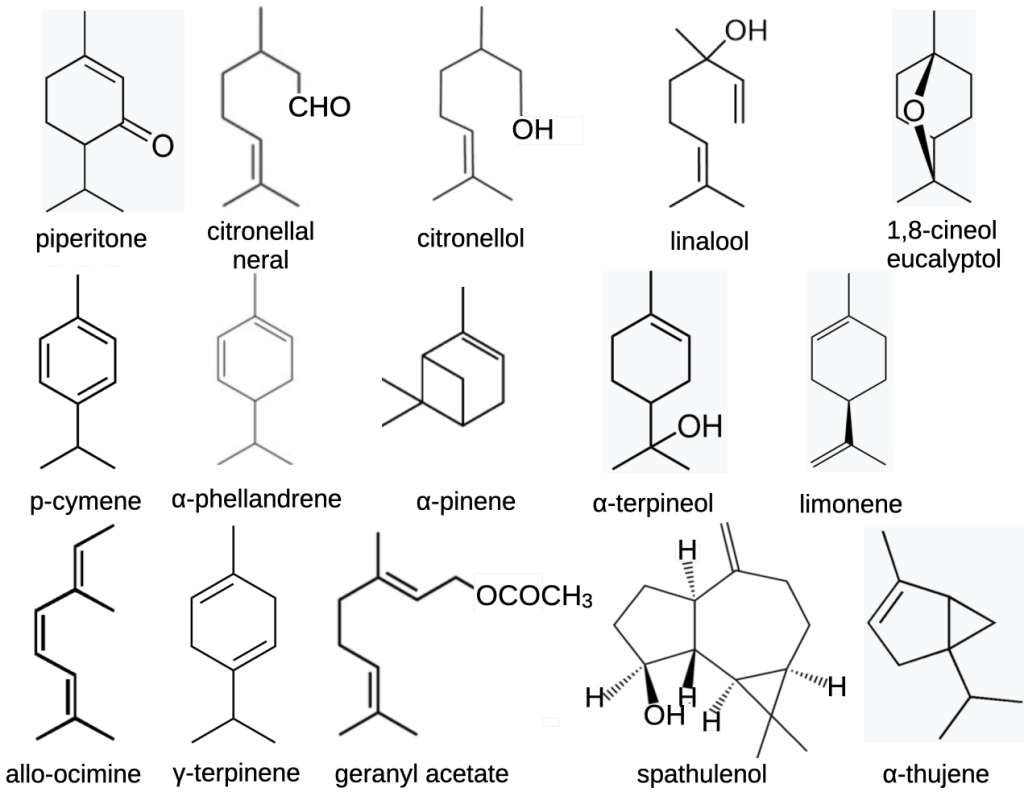
Figure 7 Eucalypt terpenes after Barbosa et al redrawn.
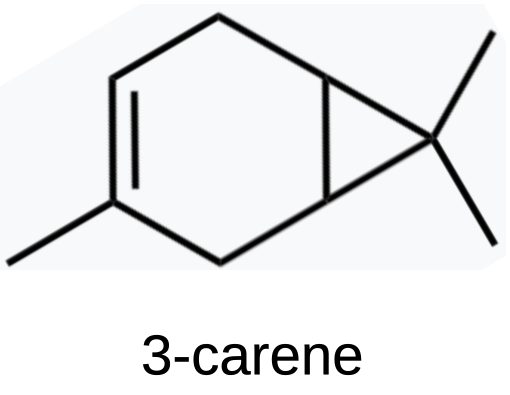
Figure 8 3-Carene, a bioactive turpentine oil constituent.
Spice island oils
Species of cinnamon tree (Cinnamomum, Lauraceae] from Sri Lanka and south east Asia and Eugenia [Myrtaceae] and Myristica fragrans (nutmeg) [Myristicaceae] from the Moluccas recall the heyday of the British East India Company. Cinnamon and clove oils are renowned for their treatment of Varroa: cinnamaldehyde from Cinnamonum species and eugenol, a common metabolite across the plant kingdom and would appear to be effective miticides. Eugenol derivatives such as methyl eugenol, eugenyl acetate and myristicin are likewise found across the plant kingdom.
To signal that the chemical profiles of natural oils can vary widely Kapoor and coworkersxiii found nutmeg purchased from an Indian market, and likely sourced from The Moluccas, contained sabinene (29%), β-pinene (11%), α-pinene (10%) and 4-terpinol (10%) whereas Muchtaridi and coworkersxiv report the presence of sabinene (21%), 4-terpineol (14%), myristicin (14%) and limonene (6%) in nutmeg oil from Indonesian Maluku or central east Java finding also a very different constitute profile for nutmeg seeds.
The constituents of spice island oils are many and varied (Figure 9).
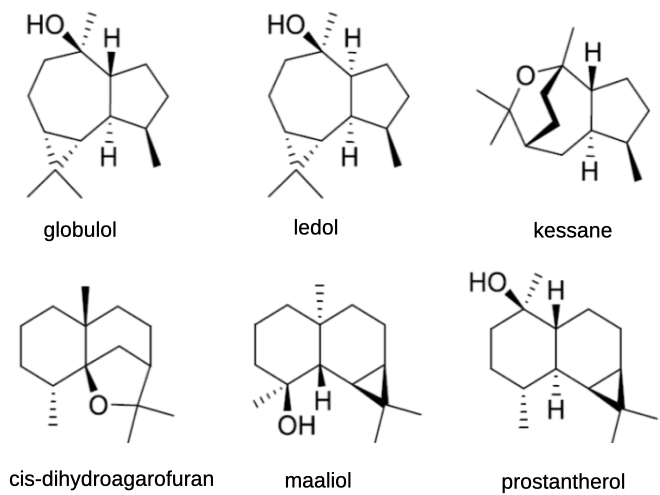
Figure 9 Spice island oil aromatics and terpenes. The North American oil of wintergreen (methyl salicylate) anise-fennel oil (anethol) are also shown.
Mint family oils
The mint family (Laminacea) sports many familiar culinary and perfumed herbs: oregano, savory, thyme, peppermint, rosemary, marjoram, lavender, basil and familiar Australian native plants Prostanthera, Westringia and Plectranthus. A number have varroacidal properties: oregano, savory, thyme and peppermint and have not dissimilar natural product profiles. For example mint herb oils are largely comprised of simple aliphatic and aromatic monoterpenes: oregano (carvacrol, p-cymene and γ-terpinene), savory (carvacrol, γ-terpinene and p-cymene), thyme (thymol, carvacrol, p-cymene, geraniol, γ-terpinene,), peppermint (menthol, menthone and menthyl acetate). Mint oil constituents have many monoterpene consituents in common (Figure 10) but in widely varying amounts.
Thyme oil (principally thymol), oregano and savory oils (principally carvacrol) with p-cymene, menthol, menthone and γ-terpinene as common minor constituents appear to be effective miticides with high SR values. Sage has a very different chemical constituent profile principally the bicyclic monoterpenes α-thujone (17–27%; common sage up to 50%), 1,8-cineole (12–27%) and camphor (13-21%)xv.
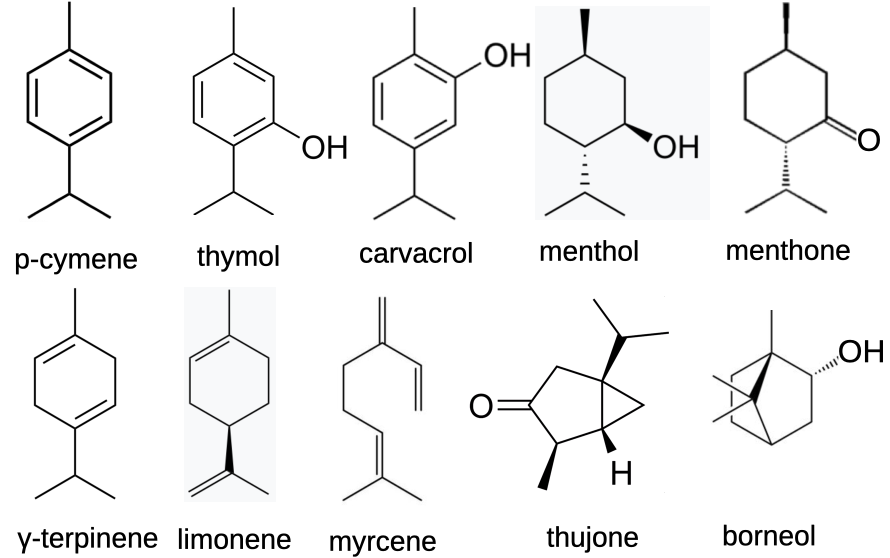
Figure 10 Typical mint family monoterpenes.
Australian native Prostanthera while sporting typical monoterpenes such as 1,8-cineol, p-cymene and α-pinene sometimes produce large amounts of characteristic sesquiterpenes (such as those shown in Figure 11) that may at least serve to protect native mint bushes from insect attack but could have miticidal properties.
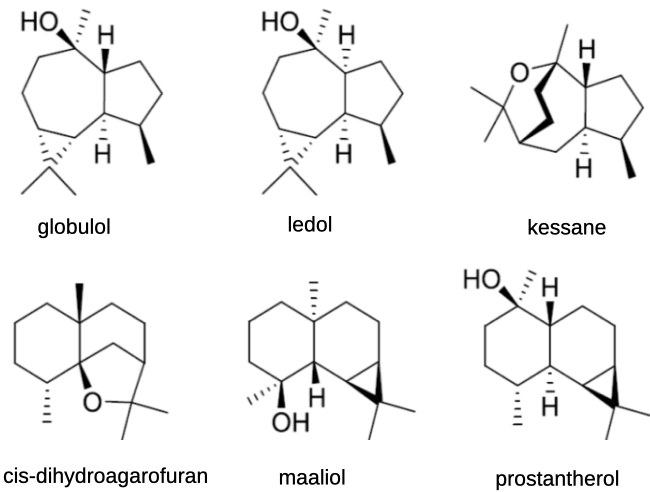
Figure 11 Atypical Prostanthera sesquiterpenesxvi.
Carvacrol and menthol are often dominant constituents of some of the oils exhibiting miticidal properties (high SR values) and may prove to be as efficacious as well tested and trialled thymol.
Geranium and storksbill family oils
The geranium and storksbill family (Geraniaceae) are characterised by the presence of simple monoterpenes (Figure 12). A common oil (from Pelargonium graveolens) contains β-citronellol, geraniol, and isomenthone, other oils also contain citronellyl formate, linalool, β-guaiene, p-menthone.
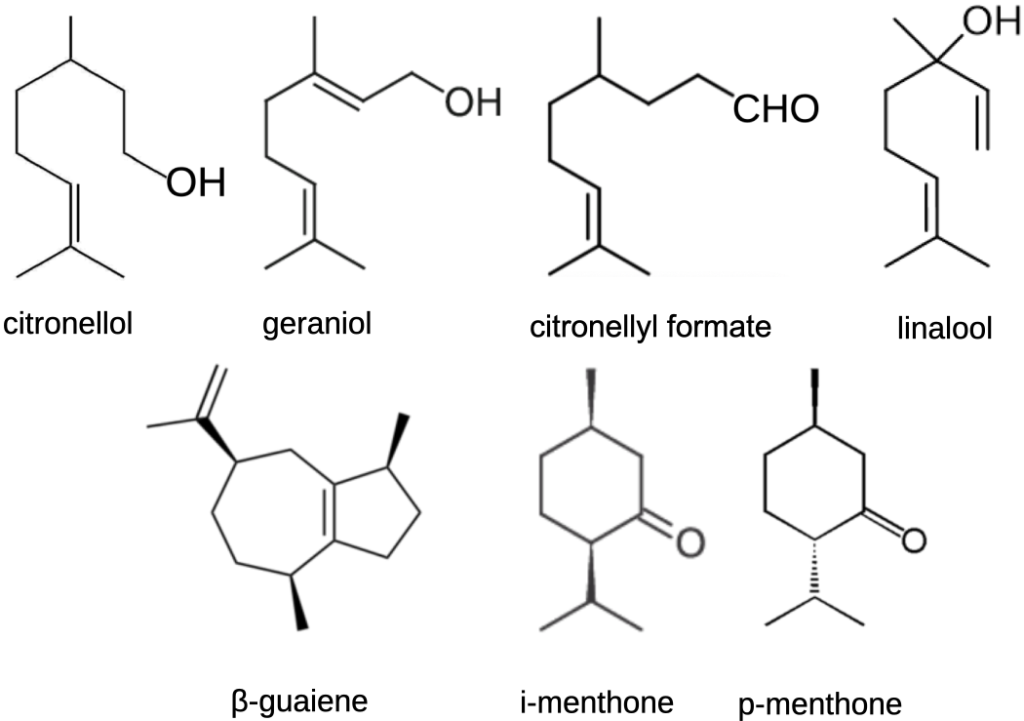
Figure 12 Geranium and pelargonium oils.
Neem oil
The active components of neem oils are many, the best characterised being a minor constituent azadirachtin (Figure 13.
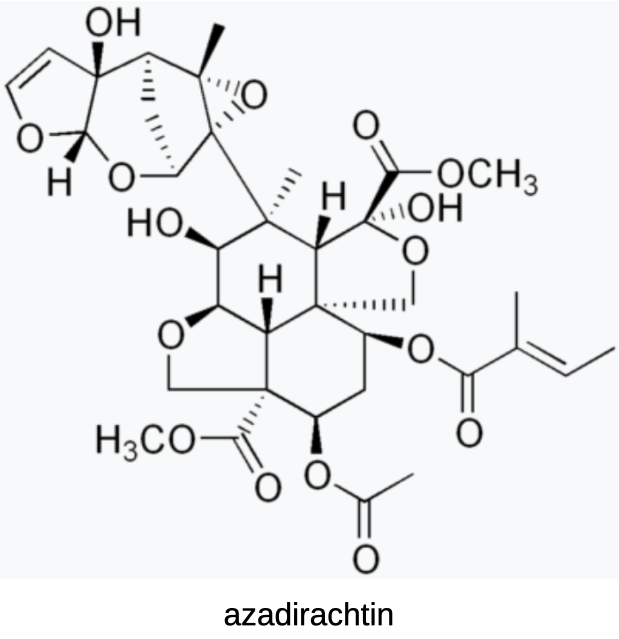
Figure 13 Biologically active tetranortriterpenoid derived from the neem tree Azadirachta indica.
Many other oils with know miticidal promise are spread rather more widely across the plant kingdom. Others include the onion family [Amaryllidaceae] – garlic oil is one contender, oils from the pepper family [Piperaceae] and bitter gourd extractives (e.g. bitter melon) [Cucurbitaceae]. These were revealed by the remarkable Hýbl study suggesting that our search for better mite sledgehammers has just begun.
Validating plant miticidal action
While such will encourage some beekeepers to employ the seemingly more successful formulations, say carefully measured doses of oregano or clove oil, the difficulties in regulating and standardising products mitigate against their wide adoption. A more productive approach may involve identifying which of the principle components of natural oils, screened using the SR test – and field testing the most promising candidates.
This would provide agency for use of unrefined natural oils with known high active miticide effectiveness. Thyme oil (largely thymol) should make the list, but so too might marjoram (α and c-terpinene, p-cymol, terpinen-4-ol), cinnamon (cinnamaldehyde), clove (eugenol and β-caryophyllene), oregano (carvacrol), peppermint (limonene and menthol), lemon grass (citronellal) leading to more targeted and replicable mite kill outcomes.
Let us examine a handful of the many, mainly laboratory, studies of oils testing their miticidal attributes drawing out defining principles that might help us narrow the search for specific mite sledgehammers. Mites like bees are susceptible to pesticidal action, so only those that target mites selectively will remain on the list.
Carvacrol
Bisrat, Begna, Ulziibayar and Jungxvii very recently reported on the miticidal efficacy of sublimated Ethiopian thyme oil. That oil contained carvacrol (35%), thymol (23%) and p-cymene (14%). They obtained 4h-LD50 values not only for the essential oil, but also for its constituents.
The essential oil had fairly good acaricidal activity against Varroa mites (LC50 109 mg/mL; 5.46 mg oil/L air volume), while thymol was more effective with an LC50 71 mg/mL (3.54 mg/L air volume), carvacrol an LC50 106 mg/mL (5.31 mg/L air volume) while p-cymene was relatively ineffectual with an LC50 > 5000 mg/mL. Importantly the study demonstrated that each of the two main constituents thymol and carvacrol were effective miticides and that their impact, taking into account that they were one third and one fifth of the essential oil composition is likely enhanced by their joint presence.
Brasesco and coworkersxviii compared the in vivo miticidal efficacy of carvacrol, cinnamaldehyde, eucalyptol [1,8-cineol], myrcene, phellandrene and thymol, all major constituents of plant oils with widely claimed varroacidal value. This study targets specific natural products, rather than natural oils with their highly variable and complex metabolite profiles. Because complex mixtures may demonstrate synergistic, additive or antagonistic effects both on bees and on mites, they also evaluated the binary mixture of thymol and phellandrene finding that the combined impact on mites was less than the additive effect expected from the pure products. In this case some antagonistic effect seems likely. Clearly the impact of complex mixtures of natural metabolites, relative to that of its principal constituents, is always hard to hazard a guess beyond saying that the natural oil may be a cheap and effective miticide: if it works well and can be easily batch profiled, it might attract regulatory support.
Ramzi and coworkersxix undertook a study of two mint family essential oils obtained from Thymus satureioides and Origanum elongatum comparing their miticidal efficacy in an apiary based study. They found that Thymus satureioides with borneol as the dominant constituent of Thymus satureioides was less effective that carvacrol dominated Origanum elongatum oil but that a blend of the plant extractives was more effective than either administered alone. Boreol as well as carvacrol may have valuable miticidal attributes.
Carvone and citral
We have already had a few wise words from Sahabi and coworkers on the need to evaluate products in the hive and to ensure that the treatment lasts some time. In another study undertaken by Sahabi and other coworkersxx four terpenes carvone, citral (geranial and neral, 1,8-cineole and limonene) (Figure 14) were compared for performance against synthetic τ-fluvalinate.
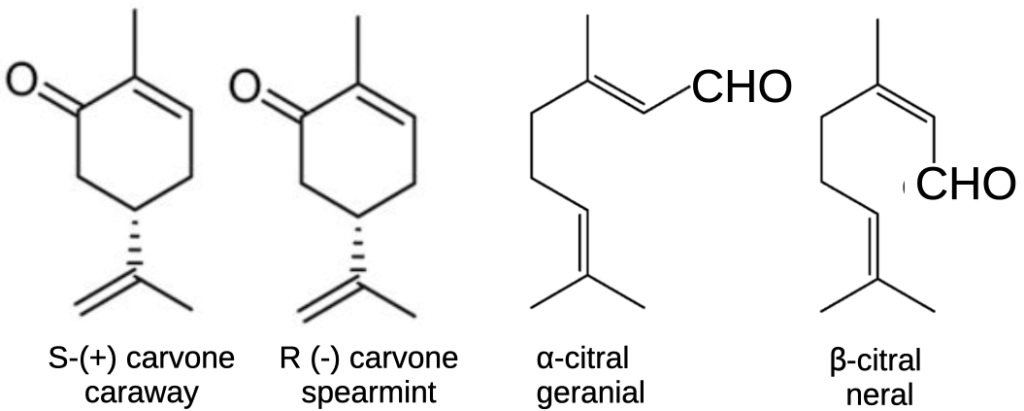
Figure 14 Carvone and citral miticides.
Carvone is a primary constituent of caraway oil (45–96%), spearmint (41%) and dill oil (22-72%). As stand alone miticides, carvone and to a lesser extent citral were found to be far more effective as miticides than either limonene or 1,8-cineole (eucalyptol) details of which are found in their paper abstract. The relative selectivity ratios (SRs) calculated for carvone, citral and τ-fluvalinate were 391, 246 and 0.5, respectively. These exceptionally high values commend carvone and citral to full honey bee colony mite suppression trials.
1,8-Cineol (eucalyptol)
In a study of the effectiveness of eucalyptus oils on Varroa, of which 1,8-cineol is consistently a major constituent, Atmani-Merabet and coworkersxxi demonstrate a variability in the miticidal efficacy of oils four eucalypt tree oils (percent cineol): blue gum Eucalyptus globulus (78%), swamp messmate Eucalyptus robusta (66%), snow gum Eucalyptus pauciflora (57%), ironbark Eucalyptus sideroxylon (40%) and black peppermint Eucalyptus amygdalina (36%). This suggests, but does not prove, that the relative miticidal efficacy is correlated with the amount of cineol present.
Other myrtaceous plants have commonly available oils dominated by 1,8-cineol, for example the tropical cajeput (tea tree) oils. Idrus and coworkers report their variable chemical profile (1,8-cineol ~65%, α-terpineol ~10%, 1-caryophyllene ~5% and β-ocimene ~3%) from the Moluccas and Papua.
Citronellal and citral (neral and geranial)
The chemical makeup of lemon grass oils (Cymbopogon species) vary between species and also varies regionally.
The principal constituents of Cymbopogon nardus are β-citronellal (40%), geranial and neral (α and β citral)xxii. Giménez-Martínez and coworkersxxiii demonstrated the varroacidal character of this oil. Remarkably they showed that the oil was more effective than citronellal alone in killing varroa.
In a separate field study the response of miticidal action to three mint family and lemon grass essential oils [thyme (Thymus linearis), lemon grass (Cymbopogon citratus), rosemary (Rosmarinus officinalis), mint (Mentha longifolia)] used at three concentrations (25, 50 and 100%) against Varroa destructor, Islam and coworkersxxiv measured mite fall as a proxy for miticidal kill rates comparing their performance to that of hives treated with 65% formic acid. The total number of dead Varroa mites was recorded by formic acid (323), followed closely by lemon grass oil (306), thyme oil (263), mint oil (204) and rosemary oil (188). Clearly this lemon grass oil is an effective miticide. Cymbopogon citratus is widely grown but its principal constituents are neral (41%) and geranial (32%).
It appears that both citronellal and citral (its isomers neral and geranial) are miticides and that there may be some synergistic action of other oil components.
Limonene
Choi and coworkersxxv report limonene as being effective for control of both Varroa and Tropilaelaps mites. The value of this study lies in signalling limonene as being a suitable miticide for control of both parasites. It seems reasonable to conjecture that other natural products in controlling varroa will be also effecting in controlling both mites. Limonene is characterised in part by its very low toxicity to bees.
Essential oil studies
Direct evidence of essential oil miticidal efficacy also come from other studies comparing oils from different plant sources.
Bakar and coworkersxxvi scoped the efficacy of four disparate essential oils, neem oil, lemon oil, eucalyptus oil and orange oil finding that all except orange oil were effective in controlling mites, the effects were dose dependent and that extended application increased their mite killing efficacy
Begna and coworkersxxvii conducted a similar study on four essential oils: Eucalyptus globulus (blue gum), Rosmarinus officinalis (rosemary) and Trachyspermum ammi (ajowan caraway, two sources)and with their principal natural product constituents: thymol, carvacrol, γ-terpinene, p-cymene, and 1,8-cineol. They also examined the efficacy of a combination of the principal consituents: thymol–carvacrol, thymol–γ-terpinene and thymol–carvacrol–γ-terpinene obtaining lethal (LD50) concentrations for mite treatments, also extending the study to examining the toxicity of oils on both Asian (Apis cerana) and Western (Apis mellifera) honey bees.
Amongst their many findings they report a synergistic effect of thymol and carvacrol where at the same time they observed no significant bee mortality. This is a profound finding as these two metabolites are often found in near equal proportions in oregano and savory oils. Assuming that a standard method of extending their delivery such as vapourisation or slow release from an absorbent medium such as cardboard or dishcloth material can be achieved these oils may find wide application.
Alsaadi, Keshlaf and Mirwanxxviii have reported on a study spanning a range natural oils obtained from bitter melon, garlic, basil, thyme, mint, eucalypts, rosemary, mustard and clove oils signalling that all are lethal to mites and that, surprisingly, garlic oil was about as effective as thyme oil in killing mites.
Abd El-Wahab, Ebadah and Zidanxxix undertook undertook a study of thyme, cinnamon, lemon grass and anise oils recorded mite kill levels similar to those achieved by formic acid. From this we learn that the anise-fennel [Apiaceae]-licorice constituent anethol may also be an active miticide.
In an illustrative study of oil rich Algerian wormwood daisy shrubs, Hazam and coworkersxxx showed that each species had a distinctly different principal constituent: davanone (67%) in Artemisia herba alba, β-pinene (20%) in Artemisia campestris and piperitone (69%) in Artemisia judaica. They recorded high selectivity ratio (SR) values of 11, 9 and 6 respectively, each outperforming the positive control thymol (SR = 3.6).
Perhaps one of the best and fairly early studies comparing a range of products that included the widely used methyl salicylate (oil of wintergreen) was conducted by Lindberg, Melathopoulos and Winstonxxxi. They employed τ-fluvalinate and formic acid, well established miticides, as positive controls. They concluded that thymol, clove oil, Magic3 (a proprietary mixture of natural metabolites) and methyl salicylate all demonstrated selectivity equal to or greater than that of formic acid. The six most selective of the 22 treatments tested (clove oil, benzyl acetate, thymol, carvacrol, methyl salicylate, and Magic3) were further evaluated to estimate LD50 values and selectivity ratios (Apis mellifera/Varroa jacobsoni (now Varroa destructor) LD50s at 24, 43, and 67 h after exposure.
The wisdom or otherwise of home grown treatments
A defining intent of this search for alternative natural product treatments is that of finding new, effective and ideally inexpensive varroa control agents. The risk of employing new treatments, short of using those already in wide, if unapproved, use, is that treatment will likely fail. In the absence of close monitoring you will likely lose your bees.
However it seems likely that we have only scratched the surface in the hunt for prospective essential oil miticides. Those that have passed the SR (selectivity ratio) test should be extensively field tested, including the most promising key metabolites (Table 2). Chandorkar, Tambe, Amin and Madankar list the principal metabolites of a range of commercially exploited eucalypt speciesxxxii, most other records coming from scattered internet searches.
| Miticidal metabolite | Major sources | Ranking | Typical sources (indicative percentage) |
| acetic acid | Acetobacter spp fermentation of sugars | 2 | Rotting fruit, sucrose, glucose; available as 100 % glacial acetic acid |
| anethol | Fennel (Foeniculum vulgare); star anise (Illicium vulgare); anise (Pimpinella anisum) | 2 | Bitter fennel (50–78); sweet fennel (60–80); star anise (86–93); anise (87–94) |
| azadirachtin | Neem tree (Azadirachta indica) | 2 | Neem (0.2-0.8) |
| borneol | Moroccan thyme (Thymus satureioides) | 3 | Moroccan thyme (30) |
| calamenene | Manuka (Leptospermum scoparium) | 3 | Manuka (18) |
| caryophyllene | Seeds of cloves (Eugenia caryophyllata); black pepper (Piper nigrum); juniper (Juniper rigida) | 3 | Cloves (10); black pepper (17); juniper (25) |
| caratol | Carrot seed (Daucus carota) | 2 | Carrot seed (300 |
| carvacrol | Oregano (Origanum vulgare); savory (Satuteja montana); Thyme (Thymus schimperi) | 1 | Oregano (74); savory (42); thyme (carvacrol (35); thymol (23)) |
| carvone | Caraway; spearmint; dill | 1 | Caraway (45-96); spearmint (41); dill oil (22-72) |
| cineol (eucalyptol) | Eucalyptus species: E.globulous, E. smithii, E. maideni, E. bicostata, E. sideroxylon, E. cinerea, E. leucoxylon | 1 | Listed eucalypts (81-84) |
| cinnamaldehyde | Cinnamon, Cinnamonium species | 1 | Cinnamon oil (78) |
| citral (geranial/neral) | Litsea; ginger; lemon myrtle; lemon tea tree; African basil; lime | 1 | Litsea: α-citral (geranial) (39); β-citral (neral) (29) |
| citric acid | Citrus; Aspergillus niger fermentation of sugar or glucose | 2 | Available from Asian grocery stores in bulk |
| citronellal | Lemon grass, Cymbopogon nardus; Lemon scented gum, Corymbia citriodora | 1 | Lemon grass (44); Lemon scented gum (72) |
| citronellol | Lemon grass, Cymbopogon nardus; rose oil; pelargonium; citrus | 2 | Lemon grass (50) |
| cymene | Rosemary,Rosmarinus officinalis | 3 | Rosemary (44) |
| davanone | Wormwood, Artemisia herba alba | 2 | Wormwood (67 |
| diallyl sulfide | Garlic, Allium sativum | 3 | Garlic (60) |
| eugenol | Cloves, Eugenia caryophyllata | 1 | Cloves(87) |
| leptospermone | Manuka, Leptospermum scoparium | 3 | Manuka (12) |
| linalool | Coriander,Coriander sativum; lemon grass: orange peel | 2 | Coriander (60-80) |
| limonene | Peppermint (Mentha peperita); citrus peel | 2 | Peppermint (38) |
| menthol | Peppermint (Mentha peperita); corn-mint; citrus (Citrus species leaf or flower of pummelo, mandarin, orange, lemon) | 1 | Peppermint (16) |
| methyl salicylate | Wintergreen (Gaultheria procumbens) | 1 | Wintergreen (85-99) |
| myrcene | Myrcia species;verbena; wild thyme | 3 | Pyrolysis of β-pinene |
| ocimene | Many sources but common in myrtaceae, e.g. Spanish angelica, Angelica major | 3 | Spanish angelica (30) |
| phellandrene | Narrow and broadleaf peppermint eucalypts; fennel; balsam | 3 | Eucalyptus radiata, Eucalptis dives |
| pinene | Cumin; hop oil; pines, e.g. Monterey pine, Pinus radiata | 2 | Monterey pine (α-pinene (19), β-pinene (39) |
| piperitone | Wormwood, Artemisia judaica; lemon grass; beard grass; mint | 3 | Wormwood (69) |
| terpinene | Cumin; Melaleuca alternifolia; Red river gum, Eucalyptus camaldulensis | 2 | Red river gum (73) |
| thymol | Thyme, Thymus vulgaris | 1 | Thyme (41) |
Table 2 Target metabolite miticides and some plant essential oils sources for which there is some evidence of Varroa mite control from in vivo trials. Thymol, β-hop acids, formic acid, oxalic acid and lactic acid have widespread regulatory approval.
Notes:
Intuitive rankings: 1 likely; 2 quite possible; 3 limited evidence, all based largely on oils with those constituents as their major component.
Sources and levels of constituent are indicative only. Some essential oils (common principal constituent indicated), e.g. citrus oil (limonene), mint oils (linalool) and oil of wintergreen (methyl salicylate) are available in bulk, while many others such as cinnamon bark, clove, eucalypt, lemongrass, orange, oregano, rosemary, savory, and spearmint oils, with a high proportion of a principal natural product, are readily available in smaller quantities at moderate cost.
Since individual constituent (mainly terpene) or plant oil have not been field evaluated and since their impact on bees is often unknown, their use, optimal and non lethal to honey bee dosage levels cannot be recommended. Some oils, notably oregano and savory oils with a high titre of carvacrol, an isomer of thymol or also containing thymol, may be effective miticides but would require careful monitoring. Others such as clove oil, cinnamon bark oil and oil of wintergreen with records of being effective might be trialled but finding a suitable dosage level and method of application remains problematic. Bees are naturally exposed to many of these metabolites some beneficial to beesxxxiii, albeit at low levels, but a number of trials signal that dosing at levels way higher than those need to kill mites indicates that applying neat raw oils – not optimising dose – is unwise.
Some guidance as to the upper safe limits for exposing bees to natural oils is provided by Kevan, Nasr and Kevan (Table 3) though safe dosing levels will be well below these levels and lower still since larvae and eggs will be exposed in any treatmentxxxiv.
| Natural product | Honey bee toxicity (mg/L) (LD50) |
| Cinnamon oil | 150 |
| Clove oil | 200 |
| Menthol | >>1000 |
| Neem oil | 100 – 1000 |
| Oil of wintergreen | 500 |
| Pinene | 1500 |
| Thymol | 100 |
Table 3 Indicative dosing limits of natural products administered in sugar.
Adapted from Kevan, Nasr and Kevan.
Despite heroic efforts to control mites by any means possible, and despite their import in slowing the evolution of a natural balance between parasite and host honey bee, it would seem that breeding bees to become mite tolerant alone remains the only viable long term option. The discovery of a biological control agent that would self replicate and reduce mites to below background nuisance levels would be an alternative holy grail. That topic will be addressed in final Part IIIB invoking the use of fungal mite pathogens.
For troglodytes still keen to go by the book, who will only use conventional arachnicides and approved natural products, all is not lost. A practical guide assembled by Kirsty Stainton and Sally Ponting (Figure 13) would be a starting point. Products registered and labelling instructions implied are a little different to those for Australia.
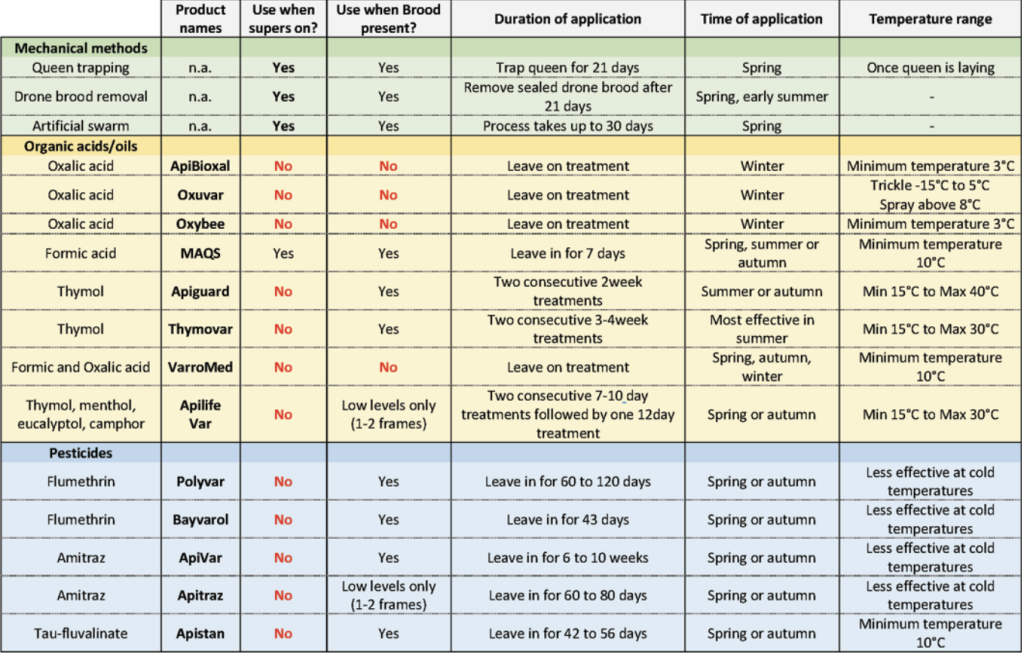
Table 3 Summary of authorised treatments for treatment of Varroa mite infestation in honey bee colonies and conditions of their use in the United Kingdomxxxv.
What a treat
As a postscript, and just in case you were to repair to the herb patch in your garden estate, I might repeat the now well founded warning that a few rhubarb plants or bunches of thyme will not cut it and resolve your varroa problem. Nor will many of the seemingly hopeful natural products I’ve listed that bowl over mites in the laboratory. In a salutary note in response to an exchange with Randy Oliver, he provided this salutary response:
You’ve certainly done your homework in reviewing the literature: lots of things that look promising, but don’t pan out. [In another note he advised that he had tried many essential oils with a selectivity ratio greater than 5 that had not been effective in field trials.]
I suggest focusing upon formic, oxalic, and thymol (perhaps β-hop acids). In Oz, you may need to include an induced brood break.
And for your information, a daily dose of 20 g of slow-release 65% formic for four consecutive days will kill virtually every mite in a double-deep hive.
Readings
iRosenkranz, P., Aumeier, P. and Ziegelmann, B. (2010). Biology and control of Varroa destructor. Journal of Invertebrate Pathology 103(supp. 5):S96-S119. http://www.ask-force.org/web/Bees/Rosenkranz-Biology-Control-Varroa-2010.pdf doi:10.1016/j.jip.2009.07.016
iiHýbl, M., Bohatá, A., Rádsetoulalová, I., Kopecký, M., Hoštičková, I., Vaníčková, A. and Mráz, P. (2021). Evaluating the efficacy of 30 different essential oils against Varroa destructor and honey bee workers (Apis mellifera). Insects 12(11):1045. https://www.mdpi.com/2075-4450/12/11/1045
iiiImdorf, A., Bogdanov, S. and Fam, L. (1999). Use of essential oils for the control of Varroa jacobsoni. FAIR CT97-3686, p.17. https://www.researchgate.net/publication/266275205_Use_of_Essential_Oils_for_the_Control_of_Varroa_jacobsoni
Imdorf, A., Bogdanov, S., Ochoa, R.I. and Calderone, N.W. (1999). Use of essential oils for the control of Varroa jacobsoni Oud. in honey bee colonies. Apidologie 30(2-3):209-228. https://www.apidologie.org/articles/apido/pdf/1999/02/Apidologie_0044-8435_1999_30_2-3_ART0010.pdf
Imdorf, A., Charriere, J.D., Maqueln, C., Kilchenmann, V. and Bachofen, B., 1996. Alternative varroa control. American Bee Journal 136(3):189-194. https://www.researchgate.net/publication/285540380
Schenk, P., Imdorf, A. and Fluri, P. (2001). Wirkung von Neemöl auf Varroa-Milben und Bienen. Schweizerischen Bienen-Zeitung 124(3):25-27.
Schenk, P., Imdorf, A. and Fluri, P. (2002).Effects of neem oil on Varroa mites and bees. American Bee Journal 141(12):878-879.
ivSabahi, Q., Gashout, H., Kelly, P.G. and Guzman-Novoa, E. (2017). Continuous release of oregano oil effectively and safely controls Varroa destructor infestations in honey bee colonies in a northern climate. Experimental and Applied Acarology 72:263-275. https://link.springer.com/content/pdf/10.1007/s10493-017-0157-3.pdf
vGhisalberti, E.L. (1996). Bioactive acylphloroglucinol derivatives from Eucalyptus species. Phytochemistry 41(1):7-22. doi:10.1016/0031-9422(95)00484-x
Hýbl, M., Bohatá, A., Rádsetoulalová, I., Kopecký, M., Hoštičková, I., Vaníčková, A. and Mráz, P. (2021) loc. cit.
viAdamczyk, S., Lázaro, R., Pérez-Arquillué, C., Conchello, P. and Herrera, A. (2005). Evaluation of residues of essential oil components in honey after different anti-Varroa treatments. Journal of Agricultural and Food Chemistry 53(26):10085-10090. doi:10.1021/jf1051813f
viiVenancio, A.N., Silva, M.J., Parreira, L.A., Júlio, A.A., Souza, G.R., Conceição Santos, M.F. and Menini, L. (2024). Citronellal: A natural aldehyde with important properties. Natural Product Research 1-14. https://www.researchgate.net/profile/Mario-Santos-43/publication/379532965_Citronellal_a_natural_aldehyde_with_important_properties_View_supplementary_material_Citronellal_a_natural_aldehyde_with_important_properties/links/660d662d10ca86798737ea77/Citronellal-a-natural-aldehyde-with-important-properties-View-supplementary-material-Citronellal-a-natural-aldehyde-with-important-properties.pdf
viiiOsman, A. (2019). Citrus oils. Chapter 26 inFruit oils: Chemistry and functionality. https://www.researchgate.net/publication/332959676_Citrus_Oils
ixSiceanu, A., Cauia, E., Vişan, G.O. and Cauia, D. (2021). The sustainable control of varroosis (Varroa destructor) by treatment of capped honeybee brood using organic volatile acids and innovative procedures. Scientific Papers. Series D. Animal Science 64(1):382-399. https://animalsciencejournal.usamv.ro/pdf/2021/issue_1/Art55.pdf
xMilani, N. (2001). Activity of oxalic and citric acids on the mite Varroa destructor in laboratory assays. Apidologie32(2):127-138. https://www.apidologie.org/articles/apido/pdf/2001/02/milani.pdf
xiVilarem, C., Piou, V., Blanchard, S., Vogelweith, F. and Vétillard, A. (2023). Lose your grip: Challenging Varroa destructor host attachment with tartaric, lactic, formic, and citric acids. Applied Sciences 13(16):9085. https://www.mdpi.com/2076-3417/13/16/9085
xiiBarbosa, L.C.A., Filomeno, C.A. and Teixeira, R.R. (2016). Chemical variability and biological activities of Eucalyptus spp. essential oils. Molecules 21(12):1671. https://scholar.google.com.au/scholar?hl=en&as_sdt=0%2C5&q=Chemical+variability+and+biological+activities+of+Eucalyptus+spp.+essential+oils.&btnG=
xiiiKapoor, I.P.S., Singh, B., Singh, G., De Heluani, C.S., De Lampasona, M.P. and Catalan, C.A. (2013). Chemical composition and antioxidant activity of essential oil and oleoresins of nutmeg (Myristica fragrans Houtt.) fruits. International Journal of Food Properties 16(5):1059-1070. https://www.tandfonline.com/doi/pdf/10.1080/10942912.2011.576357
xivMuchtaridi, Subarnas, A., Apriyantono, A. and Mustarichie, R. (2010). Identification of compounds in the essential oil of nutmeg seeds (Myristica fragrans Houtt.) that inhibit locomotor activity in mice. International Journal of Molecular Sciences 11(11):4771-4781. doi:10.3390/ijms11114771
xvCraft, J.D., Satyal, P. and Setzer, W.N. (2017). The chemotaxonomy of common sage (Salvia officinalis) based on the volatile constituents. Medicines 4(3):47. https://scholar.google.com.au/scholar?hl=en&as_sdt=0%2C5&q=The+Chemotaxonomy+of+Common+Sage+%28Salvia+officinalis%29+Based+on+the+Volatile+Constituents&btnG=
xviSadgrove, N.J., Padilla-González, G.F., Telford, I.R., Greatrex, B.W., Jones, G.L., Andrew, R., Bruhl, J.J., Langat, M.K., Melnikovova, I. and Fernandez-Cusimamani, E. (2020). Prostanthera (Laminaceae) as a ‘cradle of incense’: Chemophenetics of rare essential oils from both new and forgotten Australian ‘mint bush’ species. Plants 9(11)):1570. https://www.wellesu.com/10.3390/plants9111570
xviiBisrat, D., Begna, T., Ulziibayar, D. and Jung, C. (2024). Acaricidal activity of essential oil-derived components from Thymus schimperi Ronninger against Varroa destructor Anderson and Trueman. Journal of Apicultural Research 63(4):664-670. https://www.tandfonline.com/doi/full/10.1080/00218839.2022.2032999 https://scholar.google.com.au/scholar?hl=en&as_sdt=0%2C5&q=Acaricidal+activity+of+essential+oil-derived+components+from+Thymus+schimperi+Ronninger+against+Varroa+destructor+Anderson+and+Trueman.&btnG=
xviiiBrasesco, C., Gende, L., Negri, P., Szawarski, N., Iglesias, A., Eguaras, M., Ruffinengo, S. and Maggi, M. (2017). Assessing in vitro acaricidal effect and joint action of a binary mixture between essential oil compounds (thymol, phellandrene, eucalyptol, cinnamaldehyde, myrcene, carvacrol) over ectoparasitic mite Varroa destructor (Acari: Varroidae). Journal of Apicultural Science 61(2):203-215. https://intapi.sciendo.com/pdf/10.1515/jas-2017-0008
xixRamzi, H., Ismaili, M.R., Aberchane, M. and Zaanoun, S. (2017). Chemical characterization and acaricidal activity of Thymus satureioides C. & B. and Origanum elongatum E. & M.(Laminaceae) essential oils against Varroa destructor Anderson & Trueman (Acari: Varroidae). Industrial Crops and Products, 108:201-207. https://www.sciencedirect.com/science/article/abs/pii/S092666901730417X (snippets only)
xxSabahi, Q., Kelly, P.G. and Guzman‐Novoa, E., 2022. Carvone and citral, two promising compounds for controlling the honey bee ectoparasitic mite, Varroa destructor. Journal of Applied Entomology 146(8):1003-1010. https://onlinelibrary.wiley.com/doi/10.1111/jen.13039 (snippets only)
xxiAtmani-Merabet, G., Hazmoune, H., Fellah, S. and Belkhiri, A. (2024). Study of Eucalyptus pauciflora L. characteristics from Algeria and its impact on the mite affecting honeybees Apis mellifera. Journal of Agriculture and Applied Biology 5(2):203-214. https://scholar.google.com.au/scholar?hl=en&as_sdt=0%2C5&q=Atmani-Merabet%2C+G.%2C+Hazmoune%2C+H.%2C+Fellah%2C+S.+and+Belkhiri%2C+A.&btnG=
xxiiKaur, H., Bhardwaj, U. and Kaur, R. (2021). Cymbopogon nardus essential oil: A comprehensive review on its chemistry and bioactivity. Journal of Essential Oil Research 33(3):205-220. https://sci-hub.se/downloads/2021-05-18/ae/kaur2021.pdf
xxiiiGiménez-Martínez, P.D., Ramirez, C.L., Mitton, G.A., Meroi Arcerito, F.R., Ramos, F., Cooley, H., Fuselli, S.R. and Maggi, M.D. (2022). Lethal concentrations of Cymbopogon nardus essential oils and their main component citronellal on Varroa destructor and Apis mellifera. Experimental Parasitology. 238:108279. https://www.sciencedirect.com/science/article/abs/pii/S001448942200073X (snippets only) https://ri.conicet.gov.ar/handle/11336/207853
xxivIslam, N.O.O.R., Amjad, M., Ehsan-ul-Haq, S.E. and Naz, F. (2016). Management of Varroa destructor by essential oils and formic acid in Apis mellifera Linn. colonies. Journal of Entomology and Zoology Studies 4(6):97-104. https://www.entomoljournal.com/archives/?year=2016&vol=4&issue=6&ArticleId=1326
xxvChoi, Y.S., Woo, S.O., Hong, I.P., Han, S.M., Byoun, G.H., Thapa, R. and Lee, M.L. (2012). Effects of limonene composition for controlling of the Varroa destructor and Tropilaelaps clareae in Apis mellifera hives. Korean Journal of Apiculture 27(2):137-142. https://agris.fao.org/search/en/providers/122646/records/647391c4e011068800975dcf
https://typeset.io/papers/ggulbeoleungaeryu-bangjereul-wihan-rimonen-joseongmulyi-3cyjtwhvg5 (paper requested)
xxviBakar, M.A., Aqueel, M.A., Raza, A.B.M., Mahmood, R., Qadir, Z.A., Arshad, M. and Sohail, M. (2019). Evaluation of essential oils for the management of parasitic bee mites, Varroa destructor (Acari: Varroidae) in vitro. Pakistan Journal of Agricultural Research 32(4):566-571. https://www.researchgate.net/publication/320526403_Evaluation_of_Few_Essential_Oils_for_the_Management_of_Parasitic_Bee_Mites_Varroa_destructor_Acari_Varroidae_in_Apis_mellifera_L_Colonies
xxviiBegna, T., Ulziibayar, D., Bisrat, D. and Jung, C. (2023). Acaricidal toxicity of four essential oils, their predominant constituents, their mixtures against Varroa mite, and their selectivity to honey bees (Apis cerana and A. mellifera). Insects 14(9):735. https://www.ncbi.nlm.nih.gov/pmc/articles/PMC10532382/ https://www.semanticscholar.org/reader/a7dfe4309386f598d6c4b092cb98799546ae76c3
xxviiiAlsaadi, M., Keshlaf, M.M. and Mirwan, H.B. (2024). Some essential oils as potential control agents for varroa mite (Varroa destructor) in infected honey bees (Apis mellifera). Open Veterinary Journal 14(2):692-698. https://www.ejmanager.com/mnstemps/100/100-1695289858.pdf?t=1726213427 https://www.ncbi.nlm.nih.gov/pmc/articles/PMC10970121/
xxixAbd El-Wahab, T.E., Ebadah, I.M.A. and Zidan, E.W. (2012). Control of Varroa mite by essential oils and formic acid with their effects on grooming behaviour of honey bee colonies. Journal of Basic and Applied Scientific Research 2(8):7674-7680. https://static.secure.website/wscfus/9893467/1396749/j-basic-appl-sci-res-287674-7680-2012.pdf
xxxHazam, S., Touati, S., Touati, L., Saher, L., Khedidji, H., Ait Kaki, S. and Chemat, S. (2024). Promising Algerian essential oils as natural acaricides against the honey bee mite Varroa destructor (Acari: Varroidae). Experimental and Applied Aricology 92(1):87-107. https://link.springer.com/article/10.1007/s10493-023-00866-4
xxxiLindberg, C.M., Melathopoulos, A.P. and Winston, M.L. (2000). Laboratory evaluation of miticides to control Varroa jacobsoni (Acari: Varroidae), a honey bee (Hymenoptera: Apidae) parasite. Journal of Economic Entomology 93(2):189-198. doi:10.1603/0022-0493-93.2.189
xxxiiChandorkar, N., Tambe, S., Amin, P. and Madankar, C. (2021). A systematic and comprehensive review on current understanding of the pharmacological actions, molecular mechanisms, and clinical implications of the genus Eucalyptus. Phytomedicine Plus1(4):100089. https://www.sciencedirect.com/science/article/pii/S2667031321000713
xxxiiiWiese, N., Fischer, J., Heidler, J., Lewkowski, O., Degenhardt, J. and Erler, S. (2018). The terpenes of leaves, pollen, and nectar of thyme (Thymus vulgaris) inhibit growth of bee disease-associated microbes. Scientific reports 8(1):14634. https://www.nature.com/articles/s41598-018-32849-6.pdf
xxxivKevan, S.D., Nasr, M.E. and Kevan, P.G. (1999). Natural oils and other substances for mite control in honey bees. Hivelights 12:15-16. http://www.dave-cushman.net/bee/naturaloils.html
xxxvStainton, K and Ponting, S. (June 2020). Varroa control and treatments. National Bee Unit. https://www.nationalbeeunit.com/assets/PDFs/3_Resources_for_beekeepers/articles_reports/BBKA_news/BBKA_60_BBKA_News_-_Varroa_treatments_June_2020.pdf
